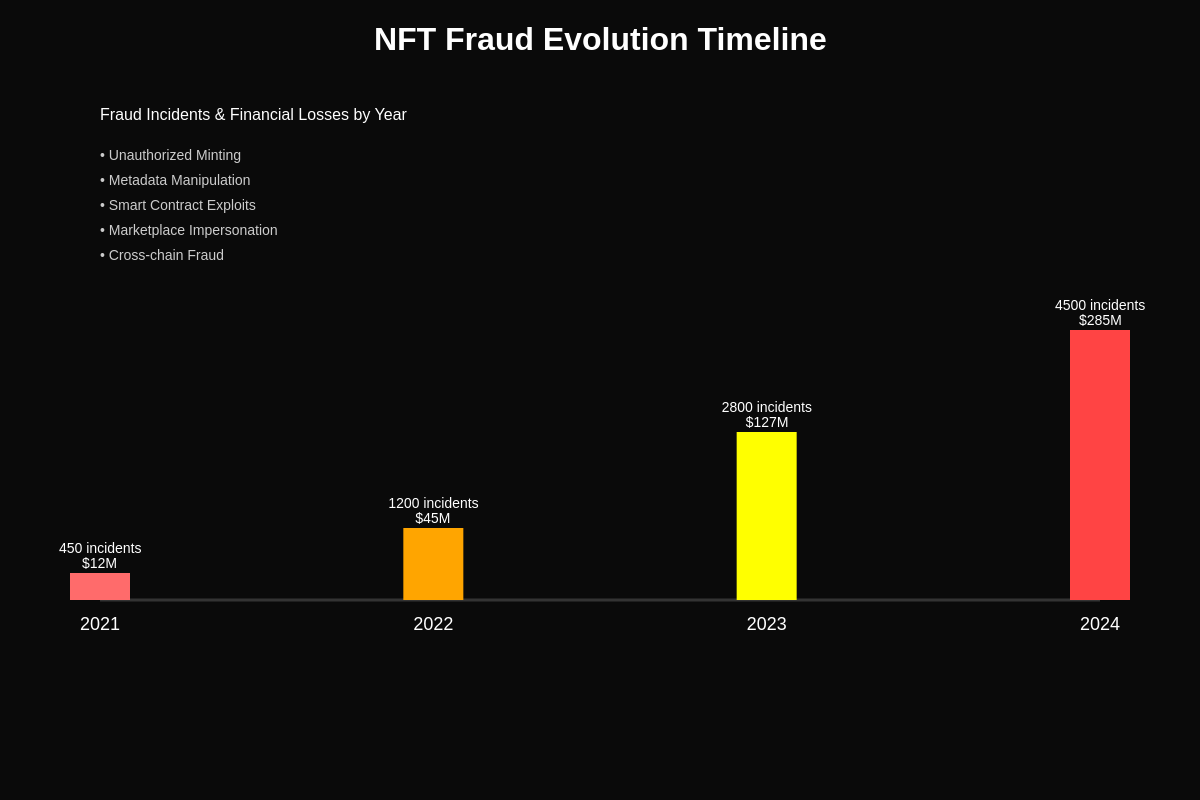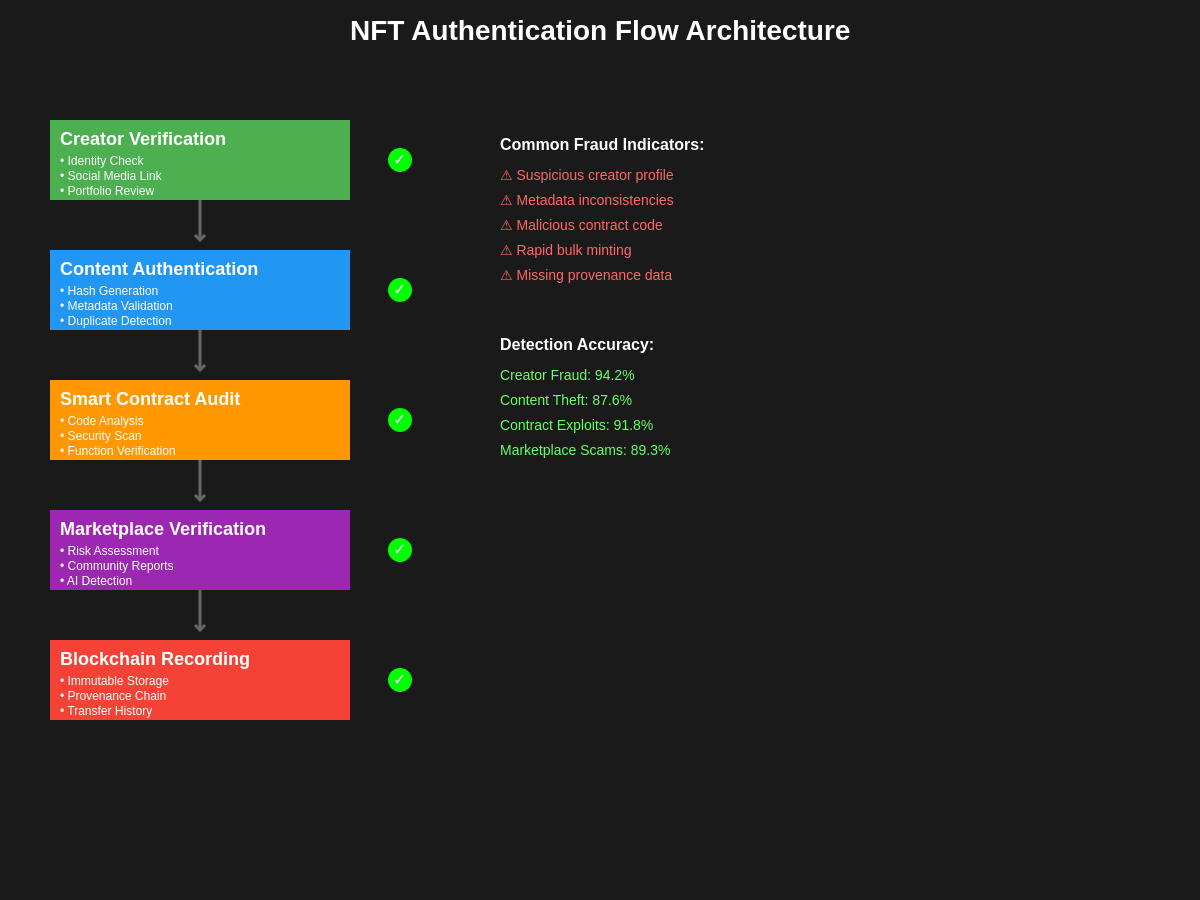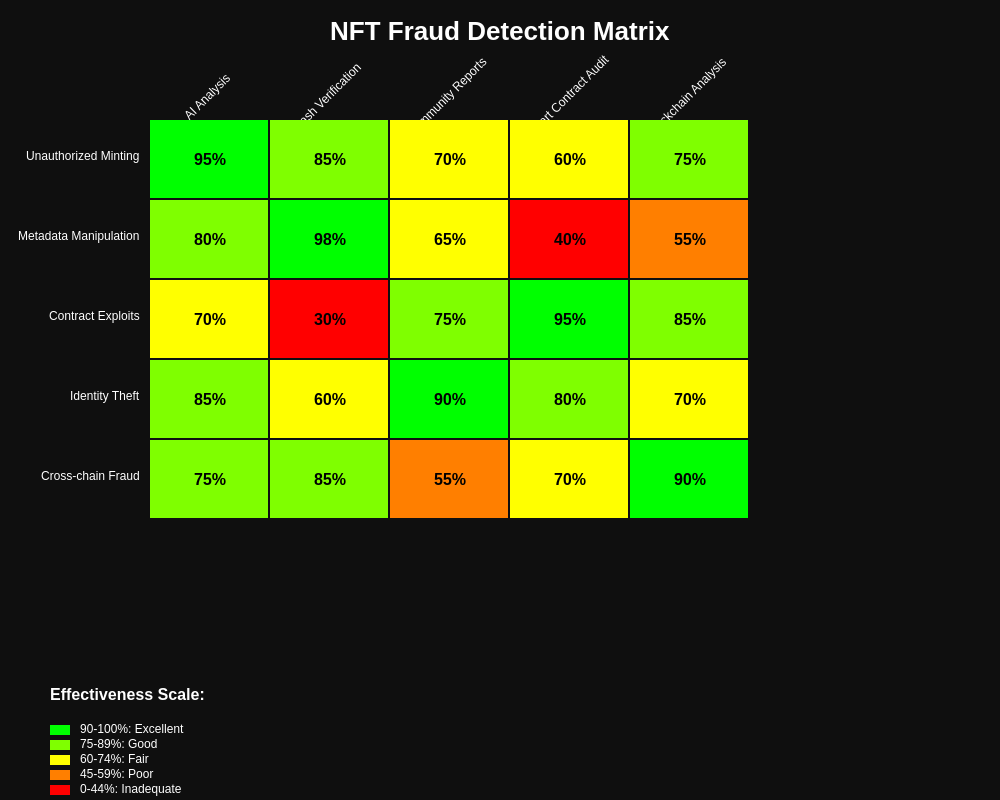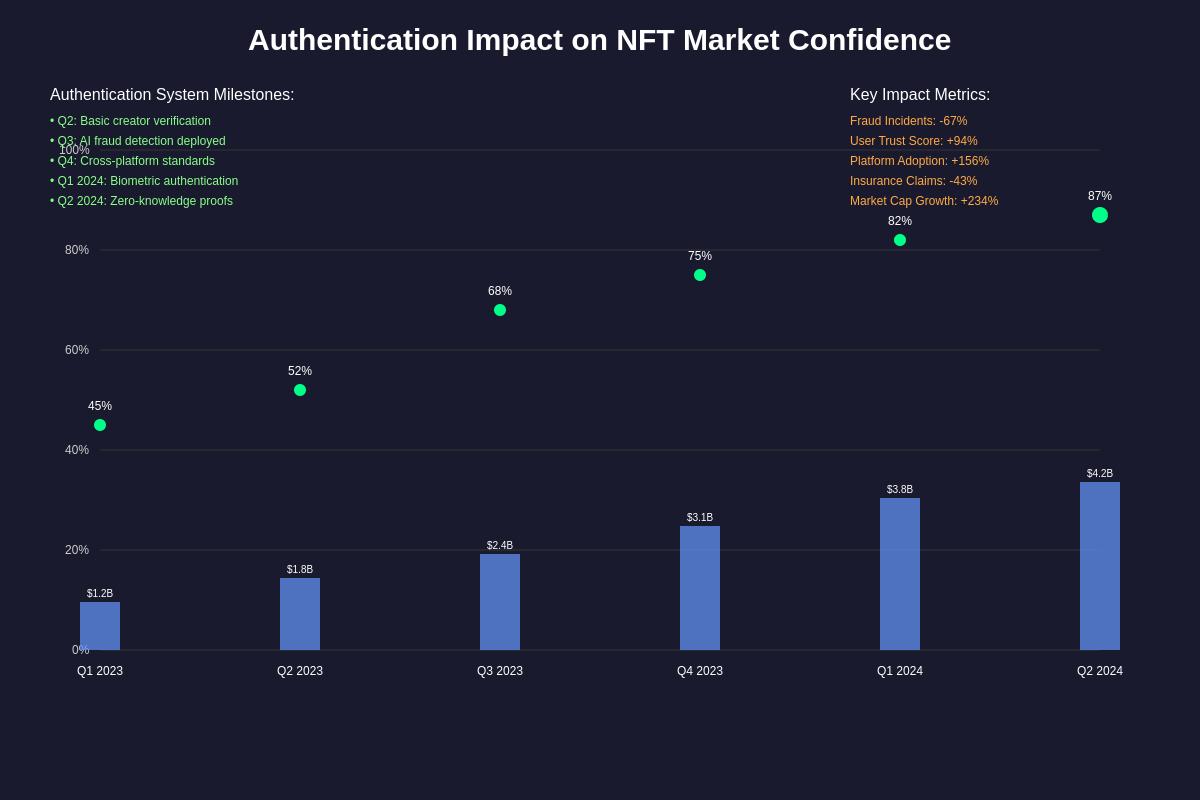For comprehensive technical analysis and market insights into NFT authentication systems, explore TradingView’s advanced charting tools to track digital asset market trends and authentication protocol performance.
The Crisis of Authenticity in Digital Assets

The explosion of non-fungible token markets has created an unprecedented crisis of authenticity, with counterfeit digital collectibles flooding marketplaces and undermining the fundamental value proposition of blockchain-based ownership verification. Despite the inherent immutability of blockchain technology, sophisticated bad actors have developed numerous methods to create convincing fake NFTs that deceive collectors and investors, resulting in millions of dollars in losses and eroding trust in the digital art ecosystem.
The authentication challenge extends beyond simple copying of digital images to encompass complex schemes involving metadata manipulation, smart contract exploitation, and sophisticated social engineering campaigns that target both creators and collectors. These attacks exploit fundamental vulnerabilities in how NFT marketplaces verify creator identity, authenticate original content, and establish provenance chains that buyers rely upon when making purchasing decisions.
The scale of the NFT counterfeiting problem has grown exponentially alongside the market itself, with security researchers estimating that fraudulent NFTs account for a significant percentage of trading volume on major platforms. This widespread fraud not only causes direct financial harm to individual collectors but also threatens the long-term viability of digital art markets by undermining the trust and authenticity that serve as the foundation of NFT value propositions.
Understanding NFT Fraud Mechanisms
NFT fraud operates through multiple sophisticated vectors that exploit both technical vulnerabilities and human psychology, with attackers employing increasingly advanced techniques to create convincing counterfeit digital assets. The most common form of NFT fraud involves unauthorized minting of popular digital artworks, where fraudsters copy images from successful collections and mint them as new NFTs on the same or different blockchain networks, often using similar collection names and metadata to deceive potential buyers.
Smart contract manipulation represents another significant fraud vector, with attackers creating malicious contracts that appear legitimate but contain hidden functions that can transfer ownership or modify metadata after purchase. These contracts often pass basic security audits but contain subtle vulnerabilities that become apparent only after victims have already completed transactions and lost their investments.
Marketplace impersonation schemes have become increasingly sophisticated, with fraudsters creating fake versions of popular NFT platforms that capture user credentials and wallet information during seemingly legitimate transactions. These phishing sites often feature identical designs to legitimate platforms and use similar domain names, making them extremely difficult for average users to identify as fraudulent.
Cross-chain fraud has emerged as a particularly challenging problem, with attackers leveraging the complexity of multi-blockchain ecosystems to create confusion about NFT authenticity and ownership. Fraudsters exploit the fact that the same digital asset can be minted on multiple blockchains, creating situations where determining the “authentic” version becomes extremely difficult even for experienced collectors.
Blockchain-Based Authentication Solutions

Advanced blockchain authentication systems have emerged as the primary defense against NFT fraud, leveraging cryptographic techniques and decentralized verification methods to establish and maintain authentic provenance records. These systems typically combine multiple authentication layers including creator verification, content hashing, and timestamp validation to create comprehensive authenticity frameworks that are difficult for fraudsters to circumvent.
Creator verification systems represent the first line of defense against NFT fraud, implementing robust identity verification processes that link real-world creator identities to blockchain addresses and smart contracts. These systems often incorporate biometric verification, social media account linking, and reputation scoring mechanisms to establish creator authenticity while maintaining appropriate privacy protections for artists who prefer to remain pseudonymous.
Content authentication through cryptographic hashing provides technical verification that digital assets have not been modified or corrupted since creation, with systems generating unique fingerprints for each piece of content that can be verified independently by anyone with access to the original hash values. These hash-based systems can detect even minor modifications to digital content while providing mathematical proof of authenticity that is virtually impossible to forge or manipulate.
Immutable provenance tracking leverages blockchain’s inherent transparency to create permanent records of NFT ownership and transaction history, enabling collectors and platforms to verify the complete ownership chain from initial creation to current holder. Advanced provenance systems incorporate metadata validation, transfer verification, and historical analysis to identify suspicious patterns that may indicate fraudulent activity or authenticity concerns.
Marketplace Verification Protocols
Leading NFT marketplaces have implemented increasingly sophisticated verification protocols designed to identify and prevent fraudulent listings while maintaining user experience and platform accessibility. These protocols typically combine automated detection systems with human review processes to create multi-layered security frameworks that can adapt to evolving fraud techniques while minimizing false positives that could harm legitimate creators and collectors.
Automated fraud detection systems employ machine learning algorithms trained on vast datasets of known fraudulent NFTs to identify patterns and characteristics associated with counterfeit digital assets. These systems analyze factors including image similarity, metadata patterns, creator behavior, and transaction timing to generate risk scores that inform marketplace moderation decisions while enabling rapid response to emerging fraud trends.
Creator verification programs implemented by major marketplaces establish trusted creator databases through comprehensive identity verification processes that may include social media verification, portfolio review, and community endorsement systems. These programs create verified creator badges and prioritized listing features that help collectors identify authentic creators while providing legitimate artists with tools to protect their intellectual property and brand identity.
Real-time monitoring systems continuously scan marketplace activity for suspicious patterns including rapid creation of similar NFTs, unusual pricing patterns, and coordinated promotional activities that may indicate organized fraud campaigns. These monitoring systems can automatically flag suspicious accounts and listings for human review while implementing temporary restrictions that prevent potential victims from completing fraudulent transactions.
Community reporting mechanisms enable collectors and creators to flag suspected fraudulent listings while providing feedback loops that improve automated detection systems over time. Advanced reporting systems incorporate reputation weighting, verification status, and historical accuracy to prioritize reports from trusted community members while preventing abuse of reporting mechanisms by bad actors.
Technical Detection Methods

Advanced technical detection methods leverage sophisticated algorithms and machine learning techniques to identify fraudulent NFTs through analysis of digital signatures, metadata inconsistencies, and behavioral patterns that indicate inauthentic content or suspicious creator activity. These detection systems continuously evolve to address new fraud techniques while maintaining high accuracy rates that minimize disruption to legitimate marketplace activity.
Image analysis algorithms employ computer vision techniques to identify unauthorized copies of existing digital artworks, even when fraudsters attempt to disguise copied content through minor modifications, color adjustments, or format changes. These systems can detect pixel-level similarities and artistic style patterns that indicate potential copyright infringement while accounting for legitimate artistic inspiration and fair use considerations.
Metadata forensics involves detailed analysis of NFT metadata structures to identify inconsistencies, anomalies, and patterns that may indicate fraudulent minting processes or manipulated ownership records. Advanced forensic techniques can detect metadata tampering, identify relationships between seemingly unrelated fraudulent accounts, and reconstruct fraud networks based on technical fingerprints left in blockchain transactions.
Smart contract analysis employs automated auditing tools to identify potentially malicious contract code that could be used to defraud NFT purchasers through hidden functions, ownership manipulation, or fund extraction mechanisms. These analysis tools can identify common fraud patterns while flagging unusual contract behaviors that warrant additional human review before marketplace approval.
Network analysis techniques examine transaction patterns, account relationships, and timing correlations to identify coordinated fraud networks that may operate across multiple accounts and platforms. These techniques can reveal sophisticated fraud organizations that use distributed operations to avoid detection while providing law enforcement and marketplace operators with actionable intelligence for fraud prevention and prosecution efforts.
Legal and Regulatory Frameworks
The legal landscape surrounding NFT authentication and fraud prevention continues to evolve as regulators and law enforcement agencies develop frameworks for addressing digital asset fraud while balancing innovation concerns with consumer protection requirements. Current legal approaches vary significantly across jurisdictions, creating complex compliance challenges for international NFT marketplaces and authentication service providers.
Intellectual property law provides the primary legal framework for addressing NFT fraud, with existing copyright and trademark protections applying to digital assets in most jurisdictions. However, the global nature of blockchain networks and the pseudonymous characteristics of many NFT transactions create significant challenges for rights holders seeking to enforce their intellectual property claims against fraudulent NFT creators and distributors.
Consumer protection regulations increasingly address NFT fraud through expanded interpretations of existing securities laws, consumer protection statutes, and e-commerce regulations that may classify certain NFT transactions as regulated financial activities. These regulatory developments create new compliance requirements for NFT marketplaces while providing additional legal remedies for fraud victims seeking recovery of their losses.
International cooperation frameworks are emerging to address the cross-border nature of NFT fraud, with law enforcement agencies developing specialized units focused on blockchain-based financial crimes and establishing information sharing protocols that enable coordinated investigations of international fraud networks. These cooperation efforts face significant challenges related to jurisdictional conflicts, varying legal frameworks, and the technical complexity of blockchain investigations.
For current regulatory developments and their market impact, monitor TradingView’s cryptocurrency regulation analysis which provides comprehensive coverage of policy changes affecting digital asset markets.
Economic Impact of Authentication Systems

The economic implications of NFT authentication systems extend far beyond simple fraud prevention to encompass market confidence, pricing mechanisms, and the overall sustainability of digital collectible markets. Effective authentication systems create significant value by reducing risk premiums, enabling more efficient price discovery, and attracting institutional investors who require robust authenticity verification before participating in NFT markets.
Market confidence directly correlates with the effectiveness of authentication systems, as collectors and investors demonstrate clear preferences for platforms and collections with strong authenticity verification. This preference translates into higher trading volumes, better price stability, and increased liquidity for authenticated NFTs while creating competitive pressure for platforms to invest in advanced authentication technologies.
Authentication costs represent a significant operational expense for NFT marketplaces and authentication service providers, with comprehensive verification systems requiring substantial investments in technology infrastructure, human expertise, and ongoing maintenance. These costs must be balanced against the value created through fraud prevention while ensuring that authentication requirements do not create barriers that exclude legitimate creators or collectors from participating in NFT markets.
Insurance markets for NFT collections have begun incorporating authentication system quality into their risk assessment and pricing models, with authenticated collections often qualifying for better coverage terms and lower premiums. This insurance industry recognition of authentication value creates additional economic incentives for creators and platforms to invest in robust verification systems while providing collectors with additional protection against fraud-related losses.
Emerging Technologies and Solutions
Cutting-edge technologies continue to reshape the NFT authentication landscape, with innovations in artificial intelligence, cryptographic systems, and blockchain infrastructure creating new possibilities for combating fraud while improving user experience and reducing verification costs. These emerging solutions address current authentication limitations while anticipating future fraud techniques that may emerge as the NFT ecosystem continues to evolve.
Artificial intelligence systems specifically trained for NFT authentication employ advanced machine learning techniques to identify fraudulent content, analyze creator behavior patterns, and predict fraud risks with increasing accuracy and speed. These AI systems can process vast amounts of marketplace data in real-time while learning from new fraud techniques to continuously improve their detection capabilities without requiring manual updates or human intervention.
Zero-knowledge proof systems enable privacy-preserving authentication that allows creators to prove ownership and authenticity without revealing sensitive personal information or proprietary creation processes. These cryptographic techniques provide powerful tools for authentication while addressing privacy concerns that may prevent some creators from participating in traditional verification programs that require extensive personal information disclosure.
Biometric authentication integration leverages unique biological characteristics to create unforgeable links between creators and their digital works, using techniques such as digital fingerprinting, voiceprint analysis, and behavioral biometrics to establish creator identity with extremely high confidence levels. These biometric systems can provide ongoing authentication for creator accounts while detecting account takeover attempts that might otherwise go unnoticed.
Cross-platform authentication protocols are emerging to address the fragmented nature of the NFT ecosystem, enabling authentication data and reputation scores to be shared across multiple marketplaces and blockchain networks. These interoperability solutions reduce authentication costs while providing creators and collectors with consistent verification experiences regardless of which platforms they choose to use.
Industry Standards and Best Practices
The development of industry-wide standards for NFT authentication represents a critical evolution in the digital collectibles ecosystem, with leading platforms, technology providers, and industry organizations collaborating to establish common frameworks that improve fraud prevention while reducing compliance costs and technical complexity for market participants.
Authentication standard frameworks define minimum requirements for creator verification, content authentication, and metadata validation that participating platforms must implement to maintain certification and interoperability with other standard-compliant systems. These frameworks balance security requirements with practical implementation considerations while providing flexibility for platforms to differentiate their services through enhanced authentication features.
Best practice guidelines for NFT creators include recommendations for protecting intellectual property, maintaining creator identity verification, and documenting creation processes in ways that support authenticity claims. These guidelines help creators understand how authentication systems work while providing practical steps they can take to protect their works and reputation from fraud attempts.
Platform certification programs establish trust mechanisms that enable collectors to evaluate marketplace security and authentication capabilities when deciding where to buy and sell NFTs. These certification programs typically involve third-party audits of authentication systems, security practices, and fraud prevention capabilities while requiring ongoing compliance monitoring and regular recertification.
Industry collaboration initiatives bring together marketplace operators, technology providers, law enforcement agencies, and creator communities to share threat intelligence, develop common standards, and coordinate responses to emerging fraud techniques. These collaborative efforts leverage collective expertise and resources to address authentication challenges that individual organizations might struggle to handle independently.
Case Studies in Authentication Success
Real-world examples of successful NFT authentication implementations provide valuable insights into effective strategies for combating fraud while maintaining market accessibility and creator autonomy. These case studies demonstrate both the potential and limitations of current authentication technologies while highlighting key factors that contribute to successful fraud prevention programs.
Major marketplace authentication programs have achieved significant success in reducing fraudulent listings through comprehensive creator verification, automated content analysis, and community reporting systems. These successful programs typically combine multiple authentication layers while maintaining user-friendly interfaces that minimize friction for legitimate creators and collectors participating in verified transactions.
Creator-driven authentication initiatives demonstrate how artists and content creators can take proactive steps to protect their intellectual property and maintain authenticity verification independent of marketplace systems. These initiatives often leverage social media verification, community endorsement, and direct creator-to-collector communication to establish authenticity relationships that complement platform-based authentication systems.
Technology provider success stories illustrate how specialized authentication companies have developed innovative solutions that address specific fraud vectors while integrating seamlessly with existing marketplace infrastructure. These case studies highlight the importance of technical innovation, market understanding, and collaborative development approaches in creating effective authentication solutions.
Cross-industry applications of NFT authentication technologies demonstrate the broader potential for blockchain-based authenticity verification beyond digital art markets, with successful implementations in luxury goods authentication, document verification, and supply chain management providing models for expanding authentication system capabilities and market applications.
For detailed market analysis of authentication technology adoption trends, reference TradingView’s NFT market performance data which tracks correlation between authentication system implementation and market valuations.
Future Outlook and Predictions
The future of NFT authentication will likely be shaped by continued technological advancement, evolving regulatory frameworks, and changing market demands for authenticity verification as the digital collectibles ecosystem matures and attracts increasingly sophisticated participants including institutional investors, major brands, and traditional art market players.
Technology evolution trends suggest that NFT authentication systems will become increasingly automated, accurate, and cost-effective through continued advancement in artificial intelligence, machine learning, and cryptographic techniques. These technological improvements will likely reduce authentication costs while improving fraud detection capabilities and enabling new verification methods that are currently impractical or impossible to implement.
Market integration developments indicate that authentication systems will become more deeply integrated into the core infrastructure of NFT marketplaces and blockchain networks, with authentication verification potentially becoming a standard feature of NFT smart contracts and blockchain protocols rather than an optional add-on service provided by third-party vendors.
Regulatory standardization efforts are likely to result in more consistent authentication requirements across jurisdictions and platforms, potentially leading to international standards for NFT authenticity verification that reduce compliance costs while improving cross-border fraud prevention capabilities. These regulatory developments may also create new legal frameworks for NFT authentication liability and consumer protection.
Industry maturation patterns suggest that NFT authentication will evolve from a defensive response to fraud toward a proactive value creation tool that enhances market efficiency, enables new business models, and supports the development of more sophisticated digital asset markets that can attract institutional participation and mainstream adoption.
Challenges and Limitations
Despite significant progress in NFT authentication technology and practices, substantial challenges remain that limit the effectiveness of current fraud prevention efforts while creating ongoing risks for creators, collectors, and marketplace operators participating in digital asset markets.
Technical limitations of current authentication systems include scalability constraints that limit the ability to process high volumes of NFT transactions in real-time, accuracy limitations that result in false positives and negatives that impact legitimate market participants, and interoperability challenges that prevent authentication data from being shared effectively across different platforms and blockchain networks.
Economic barriers to authentication adoption include high implementation costs that may be prohibitive for smaller marketplaces and creators, unclear return on investment calculations that make it difficult to justify authentication spending, and competitive pressures that may discourage platforms from investing in authentication systems that benefit the entire ecosystem rather than providing direct competitive advantages.
Legal uncertainty regarding authentication system liability, intellectual property enforcement, and cross-border jurisdiction issues creates risks for authentication service providers while limiting the legal remedies available to fraud victims seeking recovery of their losses through authentication system failures or inadequacies.
User experience challenges include authentication complexity that may discourage legitimate creators and collectors from participating in verified transactions, privacy concerns related to identity verification requirements, and education gaps that prevent market participants from understanding how to effectively use authentication systems to protect themselves from fraud.
The ongoing arms race between authentication systems and fraud techniques means that authentication providers must continuously invest in system improvements and updates to maintain effectiveness against evolving fraud methods, creating ongoing costs and technical challenges that may not be sustainable for all market participants.
Conclusion and Recommendations
The battle against NFT fraud requires continued evolution of authentication systems, regulatory frameworks, and industry practices to maintain market integrity while supporting the growth and maturation of digital collectible markets. Success in this endeavor depends on sustained collaboration between technology providers, marketplace operators, creators, collectors, and regulatory authorities working together to address authentication challenges while preserving the innovation and accessibility that make NFT markets valuable.
Stakeholders in the NFT ecosystem should prioritize investment in robust authentication systems that combine multiple verification layers while maintaining user-friendly interfaces that encourage adoption by legitimate market participants. This investment should include both technical infrastructure and human expertise capable of adapting to evolving fraud techniques while maintaining high accuracy standards that minimize impact on legitimate transactions.
Market participants should educate themselves about authentication systems and fraud prevention techniques while supporting platforms and creators that prioritize authenticity verification and consumer protection. This support should include willingness to pay premium prices for authenticated NFTs and preference for platforms with strong authentication credentials, creating market incentives for continued investment in fraud prevention.
Regulatory authorities should develop clear, consistent frameworks for NFT authentication that provide legal certainty while supporting innovation and market development. These frameworks should address cross-border coordination, enforcement mechanisms, and consumer protection requirements while avoiding overly prescriptive requirements that could stifle technological advancement or market accessibility.
The future success of NFT markets depends significantly on the effectiveness of authentication systems in maintaining trust and preventing fraud while supporting the creative and economic potential of blockchain-based digital assets. Continued investment in authentication technology, regulatory clarity, and industry collaboration will be essential for realizing this potential while protecting all market participants from the ongoing threat of digital asset fraud.
Stay informed about authentication technology developments and their market impact through TradingView’s comprehensive digital asset analysis tools, which provide real-time monitoring of NFT market trends and authentication protocol performance across multiple blockchain networks.
Disclaimer: This article is for informational purposes only and does not constitute financial, legal, or investment advice. NFT markets involve significant risks including fraud, market volatility, and regulatory uncertainty. Readers should conduct their own research and consult with qualified professionals before making any investment decisions. Authentication systems cannot guarantee complete protection against fraud, and collectors should exercise caution when participating in NFT markets regardless of authentication measures in place.